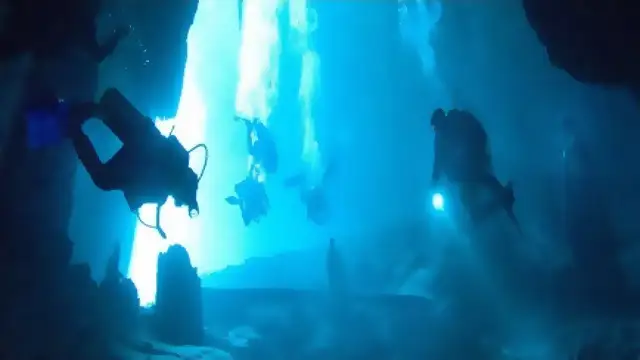In a quiet corner of the British government, a request to RAND Europe, a think-tank based in Cambridge, England, set off a series of events that highlighted the vulnerability of undersea critical infrastructure.
Key points
RAND Europe embarked on a detailed study of internet and electricity cables, analyzing public maps, interviewing experts, and holding focus groups. Midway through the project, Ruth Harris, the project leader, stumbled upon sensitive information that could be exploited by adversaries like Russia.
When she reported this to the relevant government department, the reaction was one of shock: “Oh my god. This is secret.” The realization that the team included members from across Europe led to a swift overhaul of the project to ensure it remained within “UK eyes only.”
Table of contents
The Growing Threat to Undersea Cables
For years, Western governments have harbored quiet concerns about the security of undersea cables, which are vital for global internet traffic. These worries have intensified recently due to suspicious incidents from the Baltic Sea to the Red Sea, highlighting the potential for infrastructure sabotage. Russian spies and their proxies have targeted Ukraine-linked facilities across Europe, hacking water utilities, setting warehouses ablaze, and plotting to strike American military bases in Germany. The fear is that underwater communications could be crippled in times of crisis or war, or tapped for secrets in peacetime. As the geopolitical rivalry between America and China escalates, undersea cables have emerged as a critical front in this competition.
The Scale and Vulnerability of Undersea Cables
According to TeleGeography, over 600 active or planned submarine cables criss-cross the world’s oceans, spanning more than 1.4 million kilometers—enough to stretch from Earth to the Moon more than three times. These cables carry the vast majority of internet traffic, with Europe connected to America by approximately 17 cables, mainly through Britain and France. Each year, over 100 cables are damaged, often by trawlers and ships dragging anchors. Distinguishing accidents from sabotage is challenging. For instance, the damage to the Balticonnector gas pipeline and a nearby communication cable in the Gulf of Finland in October 2023 involved the Newnew Polar Bear, a Chinese-owned container ship. Although initially suspected of foul play, Finnish authorities later concluded it was likely an accident. However, some Western officials still suspect Russian involvement.
Russia’s Underwater Sabotage Capabilities
Russia has heavily invested in naval capabilities for underwater sabotage, particularly through GUGI, a secretive unit operating deep-water submarines and naval drones. NATO’s intelligence chief noted last year that Russian activity in this domain has surged. A Policy Exchange report from February highlighted eight “unattributed yet suspicious” cable-cutting incidents in the Euro-Atlantic region since 2021 and over 70 sightings of Russian vessels behaving unusually near critical maritime infrastructure. Norwegian intelligence also reported ongoing Russian mapping of Norway’s critical oil and gas infrastructure, both physically and digitally, which could become crucial in a conflict.
Global Incidents and Concerns
The threat is not confined to Europe. In February, three submarine cables in the Red Sea were damaged, disrupting the internet across East Africa for over three months. This was likely caused by a missile strike on the Rubymar, a fertiliser ship, by Yemen-based Houthis. In March, similar disruptions occurred in West Africa when a crucial cable system was severed off the Ivory Coast, possibly due to seismic activity.
American strategists are also wary of potential Chinese threats to Asian cables. Taiwan relies heavily on undersea cables for international communications, with few terminals. In a conflict, the People’s Liberation Army might impose an “information blockade” on Taiwan, as noted by Elsa Kania of the Centre for a New American Security (CNAS). In February 2023, two cables serving Matsu, a Taiwanese island, were cut, likely by Chinese vessels, disrupting connectivity for over 50 days.
Strategic Implications of Cable Cutting
Cable cutting can serve broader war aims. Richard Aldrich and Athina Karatzogianni, intelligence historians, suggest that attacking submarine cables could undermine the US drone fleet and the Five Eyes intelligence system, heavily reliant on internet surveillance. CNAS war games in 2021 indicated that Chinese cable attacks could severely disrupt internet connectivity on Taiwan, Japan, Guam, and Hawaii, forcing reliance on less secure satellite communications. In contrast, Russia’s limited cable-cutting units might struggle to sever dense transatlantic communications swiftly.
Strengthening Defenses and Mitigating Risks
Western governments are enhancing defenses to monitor underwater activities better. NATO has increased air and naval patrols near critical infrastructure, including cable routes. In May, NATO established a Critical Undersea Infrastructure Network to improve information sharing among governments and private cable operators. A “digital ocean concept” proposes a global network of sensors to identify threats, while the European Union is considering underwater stations on the seabed for drone recharging and data transmission.
Repairing damaged cables is challenging, with only around 60 repair ships worldwide, many not flagged to America or its allies. Wartime repairs would be even more complicated, especially in contested areas like Taiwan’s coastline. Historically, cable-repair ships required warship escorts during the world wars, a strategy that might be revisited in future conflicts. To address this, the Pentagon created a Cable Security Fleet in 2021, offering American-flagged cable-ship operators a $5 million annual stipend to ensure readiness in crises and wartime.
Espionage and the Role of Major Powers
Espionage is another concern. The US and its allies are well-versed in the threat, having conducted underwater espionage for decades. In the 1970s, the US tapped Soviet military cables using submarines. By 2012, GCHQ, Britain’s signals-intelligence service, had tapped over 200 fiber-optic cables. Fears of Chinese espionage have heightened American interest in Asia’s cable infrastructure. From 2010 to 2023, about 140 new cables were laid in Asia, compared to 77 in Western Europe. China’s HMN Technologies, formerly Huawei Marine Networks, has become a significant player, laying over 94,000 kilometers of cables.
Conclusion
America’s efforts to curb Chinese influence include blocking HMN’s involvement in major cable projects and supporting competing companies. These actions have slowed China’s cable ambitions, but the threat remains. Advances in naval drones mean that deep-sea cable cutting is no longer exclusive to major powers. Identifying cable routes can take years, underscoring the need for secrecy. As the battle for control of undersea infrastructure intensifies, the world’s internet backbone remains a crucial and vulnerable target.
























